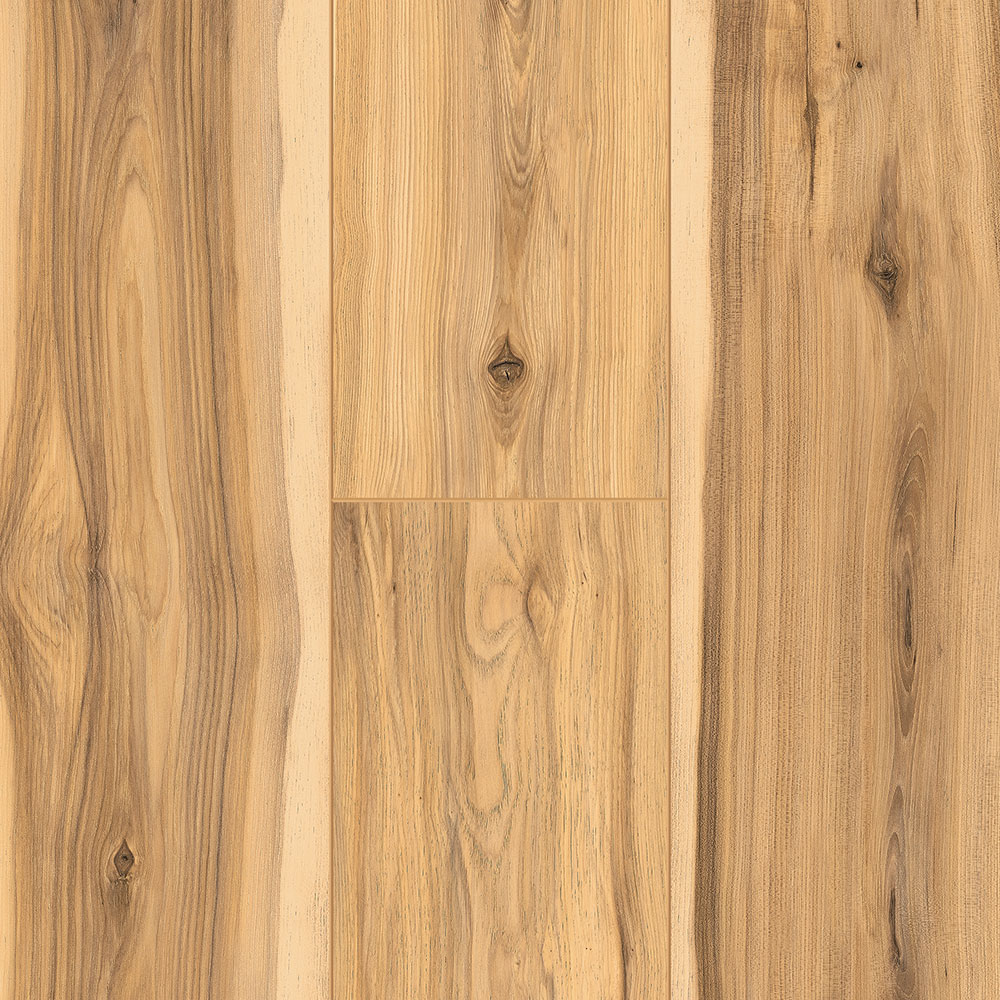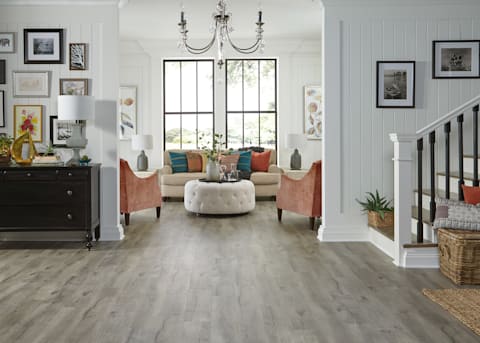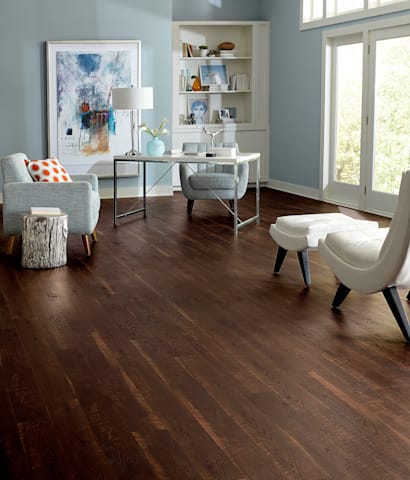- Home
- Education
- Flooring Basics
- What's the Cost to Install Vinyl Plank Flooring?
What's the Cost to Install Vinyl Plank Flooring?
The cost to install vinyl plank flooring depends on the type of vinyl, installation method, and accessories. Learn general cost factors and basics.
Even with all its beauty and performance, vinyl plank flooring is among your most cost-effective and affordable flooring choices. To help you assess just how much you might save, check out the key cost considerations below.
The Different Types of Vinyl Flooring
Each type of vinyl flooring has distinct benefits that can impact the cost. Therefore, it's a good idea to familiarize yourself with the various options before making your selection.
Rigid Vinyl Plank (RVP)
Like luxury vinyl plank (LVP), RVP is multi-layered. It features rich, natural looks of wood and stone, with warm blonde and honey hues, elegant reds and chocolates, and cool grays and slates among your choices. A clear top coating protects against scuffing and scratches, and waterproof protection comes as standard.
The difference between RVP and LVP is the stone-based polymer composite (SPC) core at the heart of the RVP. This thicker, denser core gives your planks enhanced strength and stability, making them more resistant to impacts and dents. As a more substantial flooring option, RVP generally costs more, but it could save you money down the line seeing as your planks are less likely to incur damage that would require repair or replacement.
And, direct print vinyl—like you'll find in ReNature by CoreLuxe—gives you even more flooring options. Direct print vinyl discards the décor layer used in both LVP and standard RVP. Instead, the color and texture are printed directly onto the SPC core, which gives it a cleaner, more realistic look.

Luxury Vinyl Plank (LVP)
LVP is one of LL Flooring's most cost-effective vinyl flooring choices. It gives you beautifully realistic wood and stone looks while delivering enhanced strength and performance, including waterproof protection against everyday spills. The multilayer construction includes a thin and clear protective coating that guards against scratches and abrasions, making puppy paws or heavy furniture less of a threat to your floors.

LVP is also easy to maintain. Sweeping regularly with a soft-bristled broom and periodically wet-mopping will keep your floors looking like new. There's no need to invest in special cleansers, waxes, or polishes, which could leave a dull film on your floor's surface.
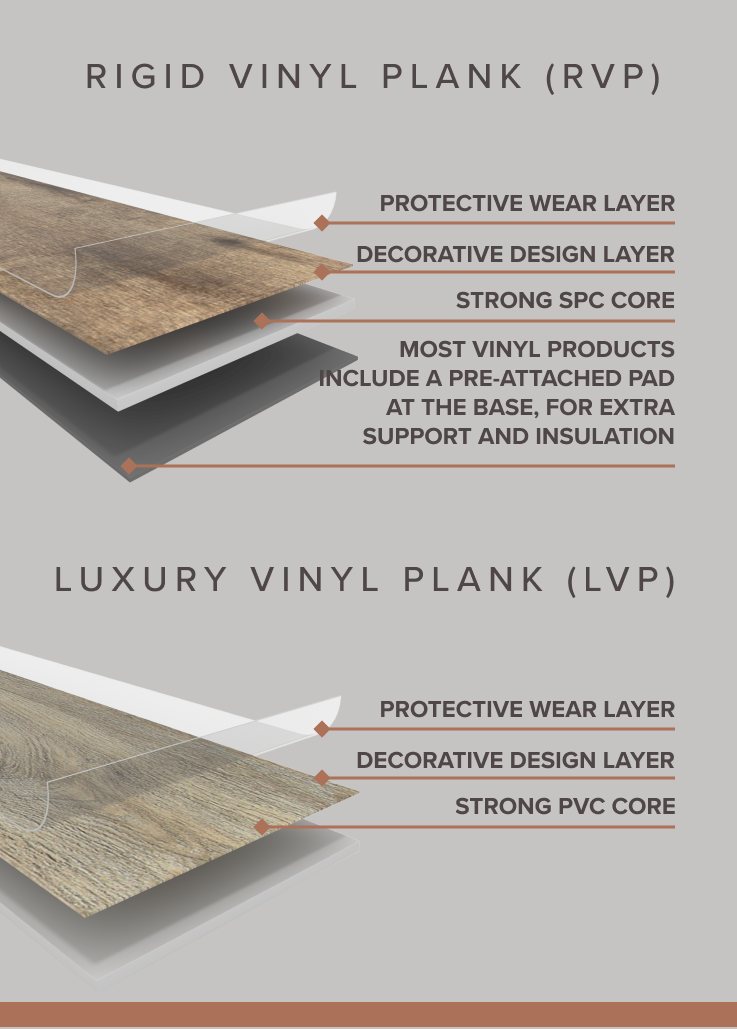
Floor Measuring Tips
When deciding on how many planks to order for your new floor, you'll want to order enough to cover the floor properly but not so much that you end up with leftover boxes of unused planks. The excess you order is known as the overage, and it's typical to order 5-10% over the square footage of your floor area. Rooms will often have uneven sizing, odd angles, curves, or other unique design features, which can make getting an accurate measurement tricky. Making a wrong measurement or cutting a plank too deeply can mean you're suddenly short on material to complete the job. To help you order the right number of planks, keep these tips in mind:
How Much Flooring Will You Need
If you're planning on using the same-sized planks in more than one room, total the area of each room together to decide on how much flooring you'll need. For example, if you're using a long, wide plank for your kitchen and bedroom, but a smaller, narrower plank for your bathrooms, total the kitchen and bedroom areas together and the bathrooms together. That way, you'll calculate the overages you'll need on a single number for each type of plank, which can help limit the amount of overage you'll need to order.
Square Footage Calculations
To measure the square footage of your room, multiply the length by the width. The trick is when there are narrow portions, wider bits, curves, or other irregularities. To calculate these areas, you can estimate the difference in the area or make accurate measurements to better calculate the size.
Calculate How Many Boxes of Vinyl Flooring You'll Need
Once you know how much square footage you'll need to cover, you can determine how much flooring to order. If a box of planks totals 30 square feet, for example, divide the square footage needed by 30, and you'll have the number of boxes you need to order. Always plan to keep one extra box for repairs in the future.
Installation Costs to Consider
Of course, the price of your vinyl flooring isn't the only cost you need to keep in mind. Installation, too, can end up as a significant expense. However, vinyl plank installation can be a relatively DIY-friendly project.
Your DIY options include click-float installation for both LVP and RVP flooring or peel-and-stick for LVP flooring only. This is an easy way to make a saving if you're comfortable taking on the work yourself.
The other option for both flooring types is glue-down installation. This requires greater expertise but results in more secure flooring, which may be worthwhile if, for example, you're installing RVP in a busy commercial space, or LVP in an area that's exposed to direct sunlight. Many homeowners feel more comfortable entrusting this work to a professional contractor. This can increase costs initially, but end up being cost-effective in the long run by improving your floor's stability and resilience.
Don't Forget Your Flooring Accessories
You'll also want to include in your cost estimate all the accessories that can make important additions to your new floors. Certain accessories can enhance your floor's performance, complete the look of your interiors, and protect your feet from heaters and gaps.
Underlayment
Underlayment is a thin layer of cushioning, often made of fibers, rubber, or foam. It's used to protect your planks from moisture infiltration, absorb sound for a more peaceful interior, and provide cushioning and thermal insulation. Even flooring with a pre-attached pad can benefit from this added support. If you do want to enhance your floor's performance with underlayment, you'll need to account for buying the same square footage as you would for your flooring.
Similarly, if you have a concrete subfloor, you'll need to install a 6mm poly moisture barrier to protect your new flooring.
Trim and Molding
Trim and molding cover the expansion gaps and transitions between all your flooring surfaces and walls. Don't forget to allow for this, it gives your finished project a clean and complete look. At LL Flooring, we offer a variety of cost-effective options to complement any type or style of flooring.
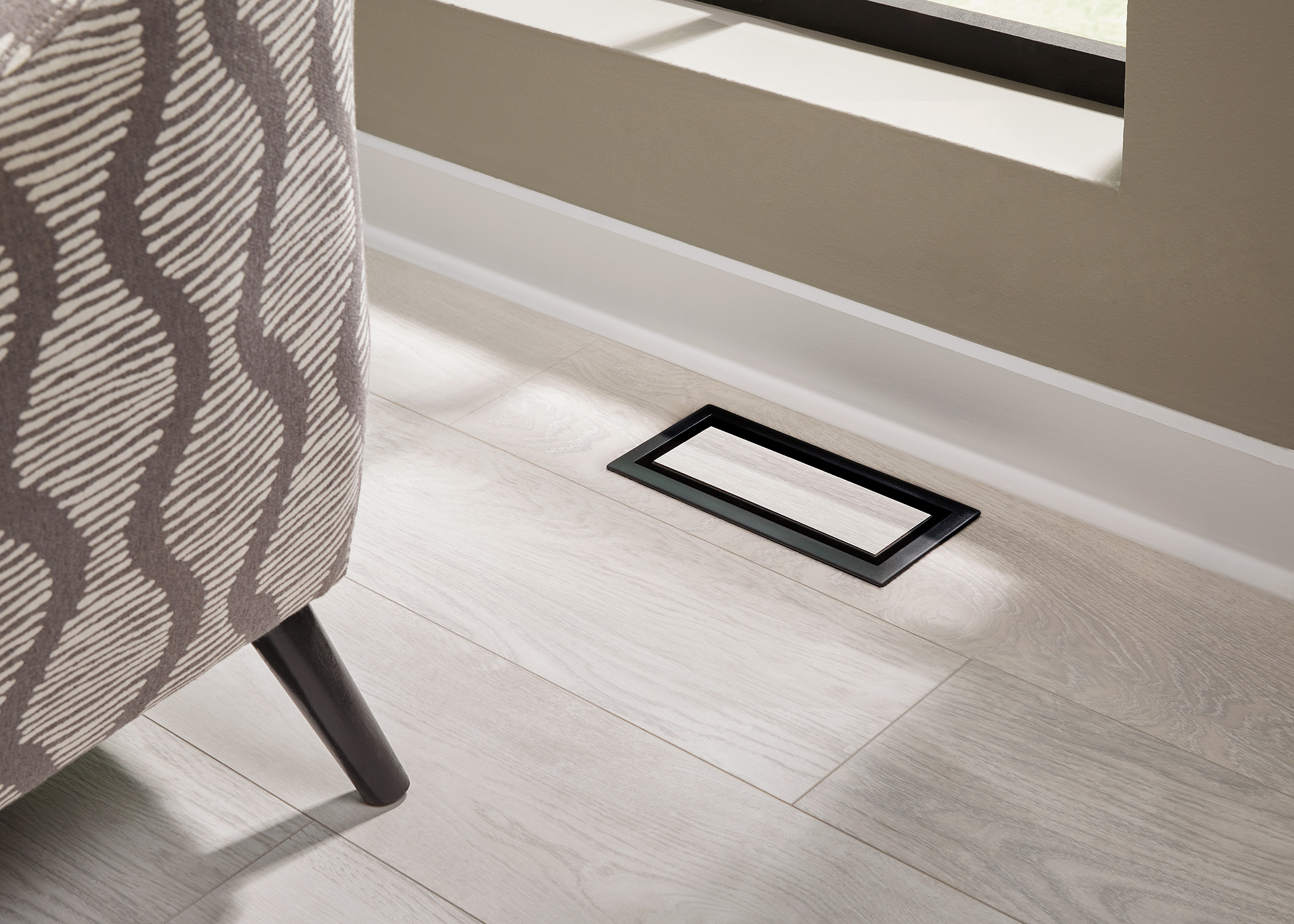
Grills and Vents
You'll need to place grills and vents over heater and vent openings as a safety measure. The good news is that the impact on your budget should be minimal, as you'll likely only need a handful.
